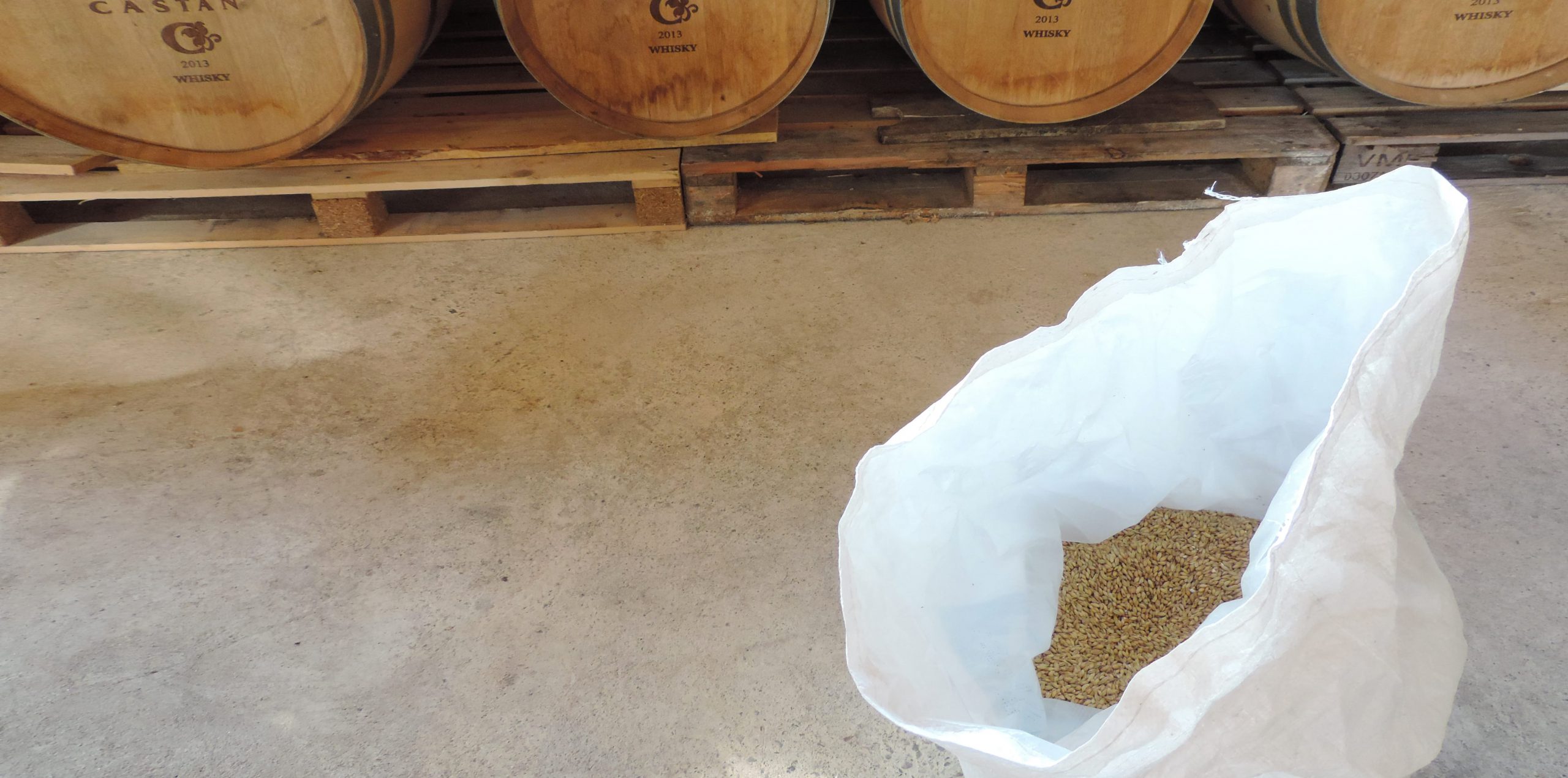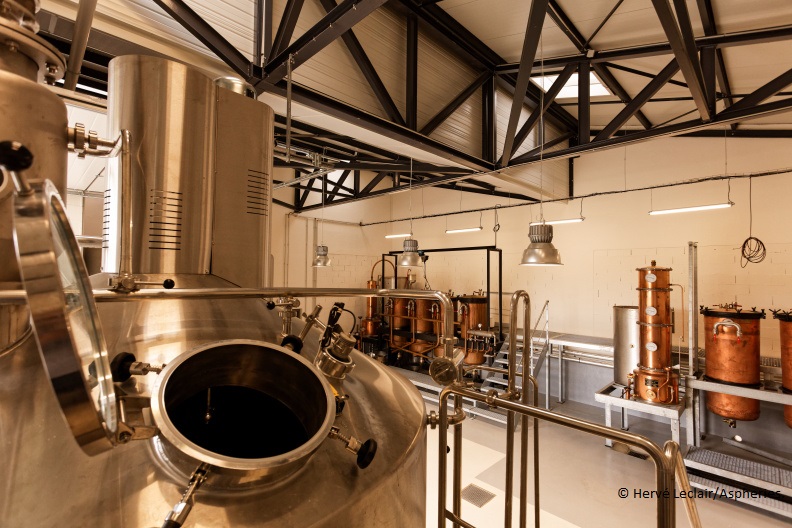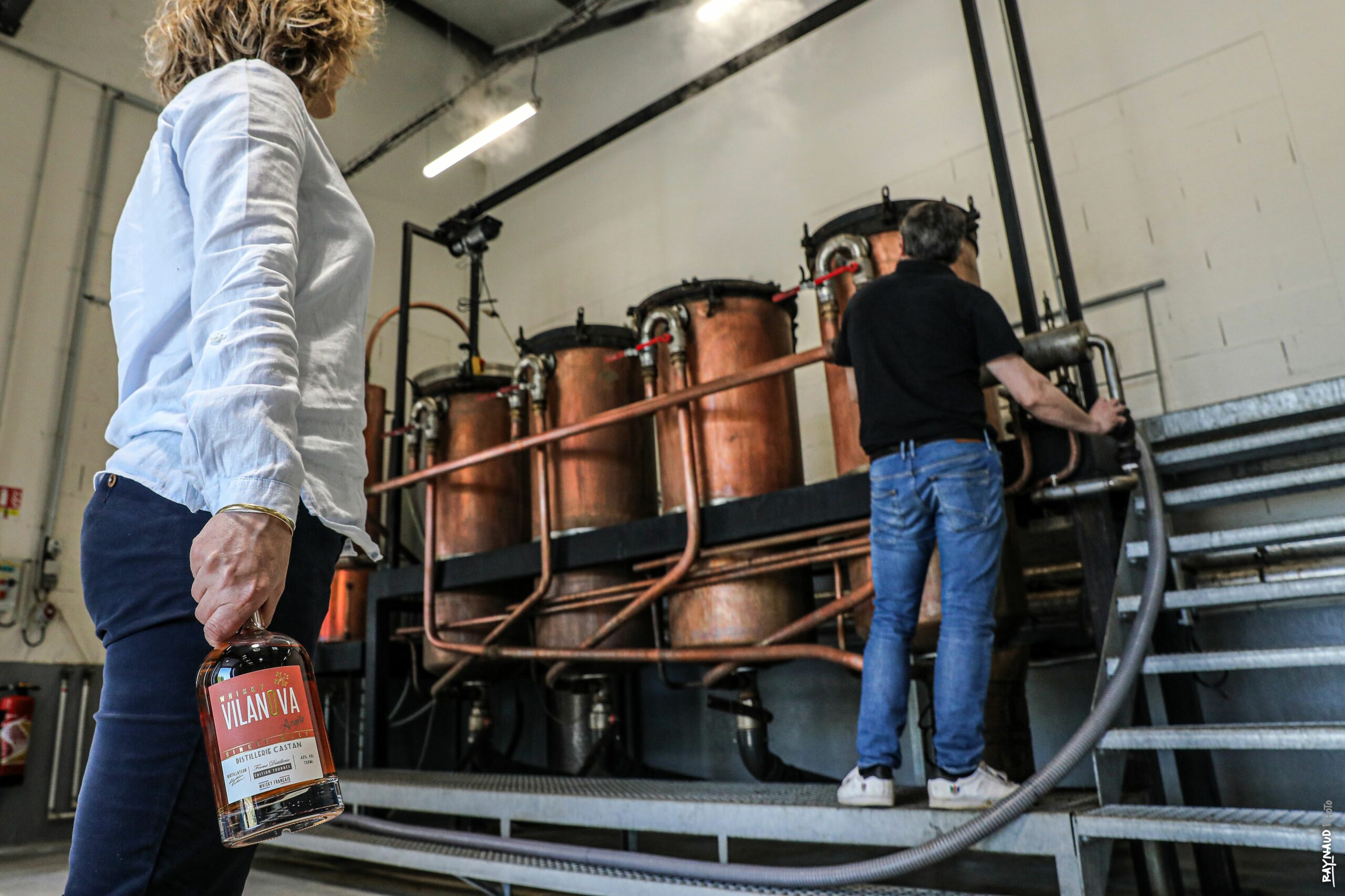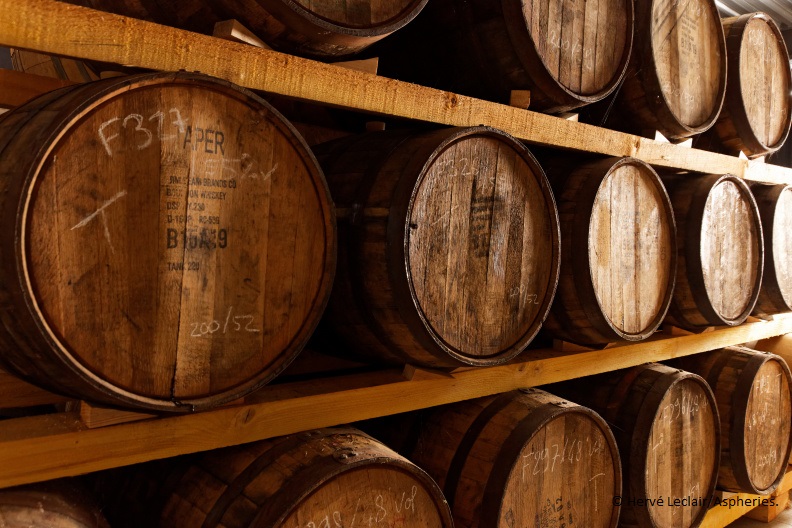WHISKY MAKING

1. Growing & Selecting barley
Malting barley is the cereal, which permit the manufacturing of VILANOVA Single Malt & Single Cask Whisky.
Farm and Distillery, the distillery use is own production of malting barley. Barley is cultivated by the Castan family, on family land in the commune of Villeneuve sur Vère, around the distillery.
For the malt whisky production, the distillery use a barley rich in starch, which will permit to obtain of the target fermenting sugars and by consequence alcohol.
In 160 hectares of parcels, 50 hectares are consecrated to malting barley. In organic conversion, we will obtain Organic Whiskies end of 2023.
Number of hectares consecrated to malting barley

2. Malting
The barley grains are sent to a malting plant located outside the distillery. Malting is the operation during which the malting barley is transformed into malt. It consists of two steps:
* Soaking: Barley is submitted to various steps of and oxygenation. Wet barley is The wet barley is spread on malting floors, a germination of a few millimeters will transform the starch into whitish flour.
* Drying: The sprouted grain is transferred to the oven for drying. Dried in hot air, it develops sweet biscuity, toasted and roasted notes. Dried on a peat fire, it develops smoky notes that are found after distillation.

Castan Malt
3. Source water
The distillery use a natural water, draw from a depth of 110 meters. In contact with a more permeable soil, and a sedimentary rock, limestone, the water penetrates the subsoil and becomes loaded with minerals, carbonates and sulfates. It then becomes alkaline and hard, which gives the Vilanova whisky its character and its unique taste.
4. Brewing
Brewing is the stage where after reducing the malted grain to a coarse flour, it is macerated in spring water, heated to several successive degrees of temperature. The malt is cooked so that it releases all its flavors. The sugars are extracted during the brewing process. The juices are separated from the floury grains during the filtration stage.


5. Fermentation
The juice will ferment in a stainless-steel tank for 5 days. Yeast is added to the juice to trigger the fermentation of the sugars into alcohol. The spent grain, leftover grain and flour, once the brewing process is complete, is sent to local farms to feed the animals.

6. Distillation
The distillation is carried out in a 1929 red copper still, inherited from the grandfather Gilbert Castan and modernized over the years. This heritage will permit to Sébastien Castan, third generation to start a whisky production in 2010.
The extraction of alcohol is by the steam which passes at low pressure, in the copper tanks, the whisky gains in roundness there. The still of the Castan distillery gives soft alcohols, which gives a real signature to Vilanova Whiskies..


7. The aging
Aging is one of the essential steps in the creation of a quality whisky. The whisky will then be enriched by the aromas of the wood, the character of the barrel which contains it. It is also the wood that will give the drink its amber color. The coloring is natural, by the wood. The whiskies do not undergo any cold filtration.
- Vieillissement en ex-fût de vin blanc, en chêne français 75%
- Vieillissement en ex-fût de vin rouge, en chêne français 50%
- Vieillissement en ex-fût de bourbon, en chêne américain 25%
Address :
55 chemin de la cardonnarie
81130 Villeneuve sur vere
Phone :
+33 5 63 53 04 61
(Prix d’un appel local)

Email :
contact@old.distillerie-castan.com
Follow Us
Follow all our news